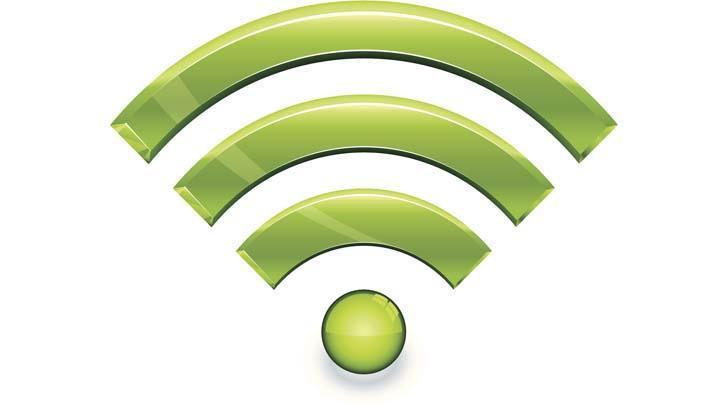Climate, energy and science
Is Wi-Fi dangerous?
Andy Kenworthy

At any given moment information from the internet can be passing through you. Just think – all those cute cat pictures and inane tweets about Miley Cyrus zipping through your body. It doesn’t sound very wholesome somehow and, certainly, there are many people concerned about the effects Wi-Fi internet could have on health.
After all, Wi-Fi sends information using low-powered radio waves that are a form of electromagnetic radiation. Electromagnetic radiation is all around us in various natural and artificial forms, including infrared radiation (such as that used by night vision equipment), ordinary visible light, ultraviolet radiation (such as that from the sun or in sunbeds), the X-rays used in medicine, the microwaves used in microwave ovens, and even gamma rays, such as those released from a nuclear explosion.
Obviously, some of these radiation sources can be dangerous. Excessive exposure to ultra-violet radiation increases the risk of developing skin cancer. While X-rays and gamma rays are forms of ‘ionising radiation’ – radiation powerful enough to disrupt the atoms and molecules that make us up. Very large doses of ionising radiation cause the bleeding, hair loss, ulcers and cancers of all our nuclear nightmares.
So, the concerns expressed about Wi-Fi centre on whether the electromagnetic radiation the Wi-Fi routers produce could have health impacts along the same lines.
Is Wi-Fi safe?
A lot of research has been done on the subject, with scientists investigating two possible kinds of risk.
The first possibility is the risk that Wi-Fi radiation might be able to knock holes in our DNA, in the same way that radiation from a nuclear explosion does. However, Wi-Fi signals simply do not carry enough energy to affect atoms in this direct way. It’s a little like asking if a light breeze could knock down a sturdy rock wall.
The second possibility investigated was whether there’s a risk from something called ‘dielectric heating’.
Dielectric heating is what cooks food in a microwave oven. Basically, the atoms in the food are made to move up and down by the electromagnetic wave passing through, a bit like the way surfers waiting for a ride bob up and down on the ocean as the waves pass beneath them. All that jiggling causes the atoms to heat up and – hey presto – the food cooks.
Obviously, this isn’t something you want happening in your body but, fortunately, the low-powered, dispersed energy a Wi-Fi unit puts out isn’t considered a risk. To put the dielectric heating effect into perspective, Professor Malcolm Sperrin, director of medical physics at Britain's Royal Berkshire Hospital, has described the intensity of a Wi-Fi signal as around 100,000 times less than a microwave oven.
So, in short, the experts agree that Wi-Fi is safe.
Is there any debate?
There are plenty of people out there unconvinced by science’s reassurances including, for instance, the authors of something called the Bioinitiative 2012 report. This claims that some 1,800 new studies point to the dangers of Wi-Fi through effects such as changing the way your DNA functions and causing the cells that make up your body to produce proteins associated with physical stress. It also points to what it claims is substantial evidence that radio frequencies, such as Wi-Fi, can cause inflammatory reactions, allergy reactions and change the normal functioning of the human immune system.
However, the Bioinitiative report has been roundly discredited by bodies such as the Australian Centre for Radiofrequency Bioeffects Research and the Health Council of the Netherlands for being biased and unscientific and “the result of the opinions of a self-selected group of individuals who each have a strong belief that does not accord with that of current scientific consensus.”
Whereas bodies such as our own National Centre for Radiation Science have this to say: “Is exposure to Wi-Fi signals harmful? No. The health research does not suggest that any special precautions are needed when you are in an area where Wi-Fi equipment is being used.”
And this view is backed up by the Institute of Electrical and Electronics Engineers, the US Food and Drug Administration, the American Cancer Society, the Federal Communications Commission and the World Health Organisation (WHO).
The WHO in particular cites approximately 25,000 articles published over the past 30 years, and argues scientific knowledge in this area is now more extensive than for most chemicals. Based on a recent in-depth review of the scientific literature, the WHO concludes current evidence does not confirm the existence of any health consequences from exposure to low-level electromagnetic fields.
Is it still worth being cautious?
It is worth noting that very heavy cellphone use – which uses a similar technology at much higher strengths and much closer to the body – has, in one recent study, been linked to a small increased risk of some brain tumours.
These results weren’t conclusive, but what they mean in practice is it’s still worth being sensible about long periods of close exposure to sources of electromagnetic radiation.
In short, you shouldn’t worry about those digital cute cat images zipping through your body, but you still might want to think twice about, say, sleeping with your head next to a Wi-Fi router while it downloads a twelve hour Game of Thrones omnibus.
And if you’re still concerned about your Wi-Fi exposure you could choose to connect your main desktop computer by wire rather than Wi-Fi, since it is not moving anyway, keep your laptop off your actual lap and switch the router off when it is not in use.
